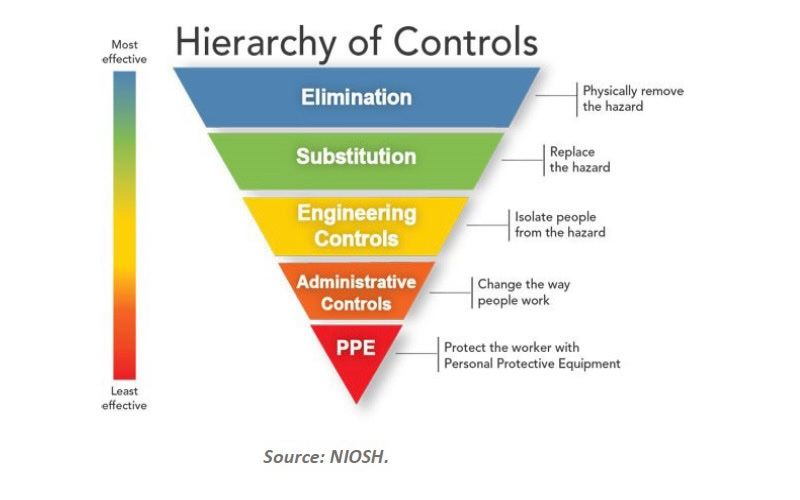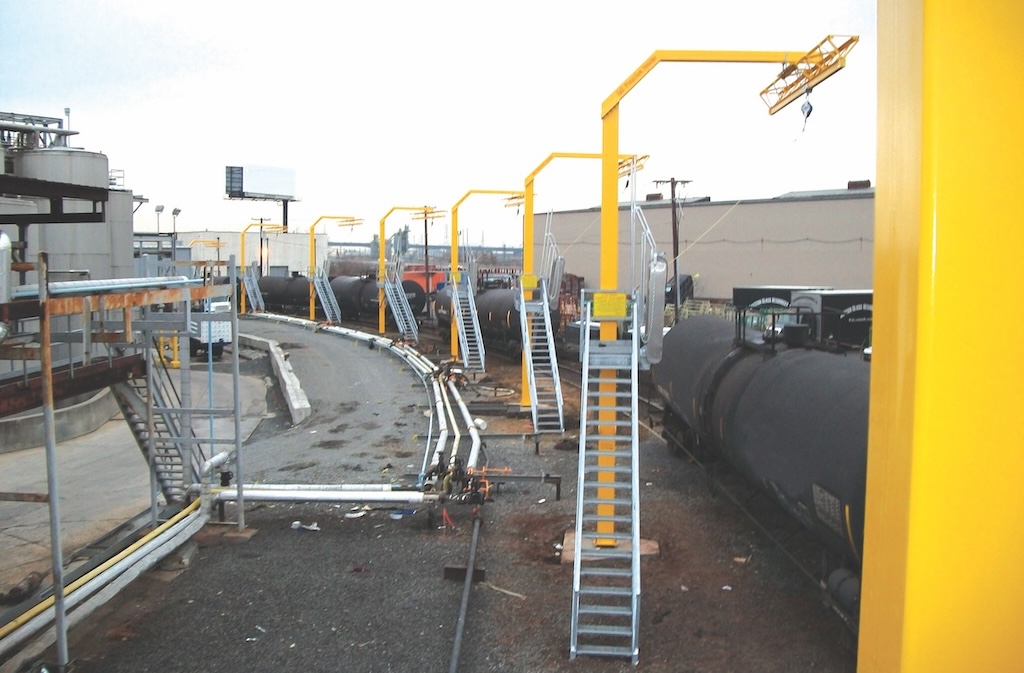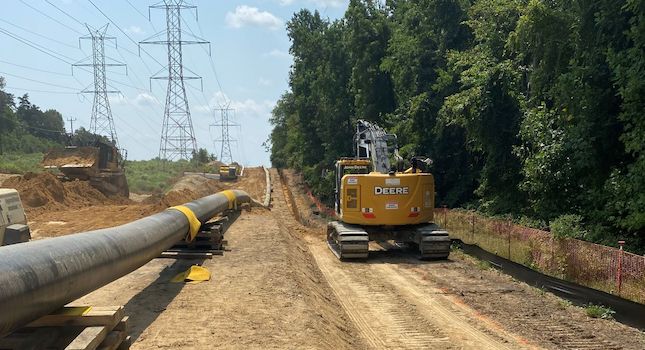Star Trek and Star Wars aren't the only places to find space wars. They're being fought every day in industrial plants.Sooner or later, every growing company runs out of space - if only temporarily. It does not usually happen overnight, but it creeps up, revealing itself in a series of conflicts between groups competing for the same space.
|
Star Trek and Star Wars aren’t the only places to find space wars. They’re being fought every day in industrial plants.
Sooner or later, every growing company runs out of space — if only temporarily. It does not usually happen overnight, but it creeps up, revealing itself in a series of conflicts between groups competing for the same space.
Before leasing or building more space, it’s a good idea to take a close look at how current space is being used. There are many actions that can be taken to increase storage capacity or reduce storage needs, ranging from simple procedural changes to substantial capital investments.
Here are some ideas on how to gain space, starting with the simpler, lower-cost ones and working up to larger ideas that will need detailed planning and financial analysis before deciding on them.
Clear out the graveyard
Every plant has its “graveyard” of used equipment — stuff that “we will use again someday.” What began as a temporary resting place has become a graveyard for rust-accumulating dinosaurs. Often, the only reason the equipment was not discarded ages ago is because it is still being carried on the books. Whether a piece of equipment remains on the books should not be the determining factor for retaining it. By tying up space, keeping it may actually be costing money. It is time for hard decisions.
Remove obsolete product
Are all of the products stored in the warehouse still active? Review the Stock Keeping Units (SKU) list for obsolete products to eliminate.
Minimize staging
Are lift truck drivers picking products from the warehouse and staging them in front of the shipping doors, to be moved into a trailer later? This practice is common, but staging occupies floor space. The ideal situation is to pick product and place it directly in a waiting trailer, which minimizes space needs and eliminates double handling.
Ship on all shifts
Is manufacturing working two or three shifts while the warehouse is shipping on only one shift? If so, production builds up before it is cleared out the following day, making space for the next production build-up. If trailers can be loaded on those “off shifts,” the build-up of inventory and the additional space it needs can be prevented.
Stack Higher
Maybe your product is packed in corrugated cases that are stacked on pallets and stored two, three, or four pallets high on the floor. This can be the densest, most cost-effective form of storage, but there may be ways to improve.
If stacking can be increased from two pallets high to three pallets high, storage capacity is effectively increased by as much as 50%. Often the factor limiting the height of the stacks is the strength of the corrugated: add more cases, and the bottom layers start to crush. But there are ways to make the stack stronger.
Column Stacking
The two typical ways of arranging stacks are interlocking (Fig. 1) and column (Fig 2).
Fig. 1. Interlocking stacks are stable, but loading on lower layers is limited because carton corners don’t align.
Fig. 2. Column stacking takes advantage of the cartons’ corner strength by aligning edges.
By aligning the corners of cases in columns, the weight of the load is transferred to the floor or pallet through the strongest part of the case. The resulting increase in strength can be dramatic — often more than double. The downside may be that switching from an interlocking style to a column style makes the load less stable. Stretch wrapping the loads will usually make them secure.
For maximum stacking strength, it is important not only to use column stacking but also to take care to align the corners of each case with the one below it. Even one inch of misalignment can result in as much as a 40% loss of strength. Avoid pallet patterns that overhang the sides of the pallet. Those unsupported corners are weak and more liable to cause a collapse.
Sturdier packaging materials
One solution to the stacking problem is to use sturdier corrugated cases. Heavier board will increase the strength of the stack, allowing taller stacks. However, the heavier board can be costly. Examine the added cost carefully — it could make this alternative uneconomical.
Utilize the whole pallet
Are pallet patterns using the full area of the pallet? Pallet utilization can be calculated by: Area of case times Number of cases per layer divided by Area of pallet . For those SKU’s that have low utilization, consider these two questions:
-
Can the pattern be changed to fit more cases on the pallet?
-
Can the case be redesigned to better fit the pallet? (Be sure the redesign does not increase the cost of the case, making the change uneconomical.)
-
Check row widths
How wide are the rows in which products are stored? If a standard fork truck is used for putting product away, rows may need to be as much as 8 or 10 in. wider than the product. But side-shifters fitted to trucks allow drivers to move the load several inches from side to side, enabling them to maneuver pallets into rows only 4 or 5 in. wider than the loads. This may allow narrower rows, making room for additional ones.
Analyze the layout
Is the warehouse laid out to suit the inventory? If the layout provides lots of deep storage rows and the inventory is mostly small quantities of many SKUs, there will be lots of empty space in the rows. (Unless of course, in desperation, rows have been filled by putting two or more SKUs in a single row. In that case, there will be problems reaching some products, others will be lost, and time to retrieve products will soar).
In other cases, there may be a lot of single-face, selective racks with as much as 50% of the floor space taken up by aisles. A different type of storage might still allow access to each SKU, but with fewer aisles.
To correct such situations, analyze the inventory to determine the ideal mix of deep and shallow rows and racks, then lay out the warehouse to provide that mix as closely as possible. This type of analysis and layout may need a consultant with special expertise to develop and implement, but the resulting benefits may easily justify the expense.
Use the right lift trucks
Lift trucks come in many sizes and types, each having different space requirements. The first question to ask is “Are your trucks the right size for your operation?” Larger lift trucks require wider aisles for turning. If the heaviest load is 1500 lb, and 5000-lb trucks are being used, smaller, less expensive, 3000-lb vehicles could reduce costs and save space at the same time. Trucks designed specifically for use in narrow aisles usually have limitations that make them impractical for general use, so investigate thoroughly to ensure the design will suit the needs.
Manage the inventory
Chances are, finished goods and raw material inventories are occupying most of the space in the warehouse. Managing these inventories can have the greatest effect on the space needed. Reducing these inventories can open a lot of space. Here are some suggestions:
Monitor inventory levels
The first step in controlling inventories is to track them on a regular basis. A simple, monthly report, with a graph showing the inventory turns for the month and year-to-date, is a good way to track progress in bringing them under control. Whenever the number of turns changes, up or down, investigate why and learn how to control it.
Try for just-in-time (JIT) deliveries
Ordering raw materials to be delivered more frequently, in smaller quantities and closer to the time they are needed, will reduce the inventory in the warehouse. The ability to do this will depend very much on supplier relations and control of the production schedule.
Consider shorter runs
Manufacturing staffs like long runs. They reduce the number of changeovers and allow greater production. However, longer runs create larger inventories. The charts in the accompanying sidebar show how shorter runs reduce inventories.
Ideal run length is a balance of the cost of changeovers versus the cost of carrying inventory (cost of money tied up in inventory, risk of obsolescence, etc.). More efficient methods of changing over will reduce their cost and allow shorter runs.
Fig. 3. Long runs versus shorter runs
Reduce the number of products
Every item discontinued will reduce inventories and save space. This is not an easy decision to make, and inventory reduction is far from the most important factor in that decision. It may be, however, that a few probing questions reveal some surprising answers.
Use the right racks
Racks can dramatically increase storage capacity. However, they are expensive, and they may not gain as much space as expected. Before investing in them, analyze the potential gain in storage space and the financial benefits.
There are many types of racks, designed to satisfy different storage needs. The accompanying table describes some of the more familiar types.
— Edited by Richard L. Dunn, Chief Editor, 630-320-7141, [email protected]
Common Types of Storage Racks
Type of rack Application Limitations Selective One deep Most commonly used racking. Allows access to every pallet. Best used for small quantities of each SKU. An aisle is needed alongside each rack It is common for 50% of floor space to be taken up by aisle. Drive-in Used where storing many pallets of the same SKU. Gives denser storage than selective racks but less access. Retrieval is LIFO (Last pallet in is the first pallet out). Drive-through Similar to drive-in but pallets can be retrieved on a first in, first out (FIFO) basis Because there is an aisle on each side, it does not store as densely as drive-in rack. Flow-through Rack has a series of conveyors running through it. Pallets are loaded on one side and roll down the conveyor to the other. This allows FIFO retrieval and is often used for feeding picking operations. Relatively expensive. Pallets tend to stick part way down the conveyor. Mechanical solutions have been developed to prevent this, but they are even more expensive. Push-up, roll-back Similar to flow-through, but product is retrieved on LIFO basis. Useful for using dead space over offices, etc. Expensive to install .Drivers need a great deal of skill to place and retrieve pallets. Effect of Shorter Runs
The two charts show the inventory of a company that manufactures two products on the same machine.
The production rate for each product is 1000 units per day, and the sales of each are 500 per day; hence, when running, the inventory of each product grows at 500 units per day.
The upper graph shows the inventory levels when the lines run 10 days between changeovers. Combined inventory remains steady at 5500 units.
The lover chart shows the inventory levels when the lines run 5 days between changeovers. Combined inventory remains steady at 2500 units



